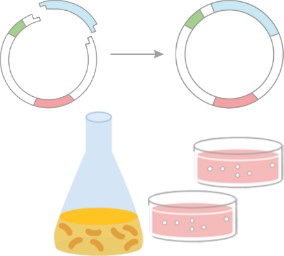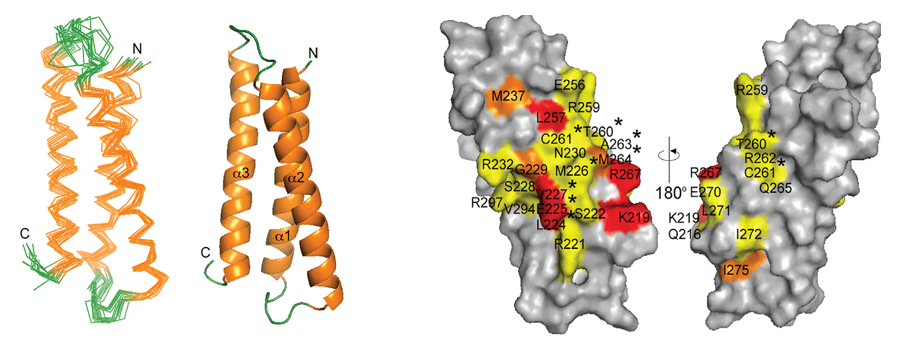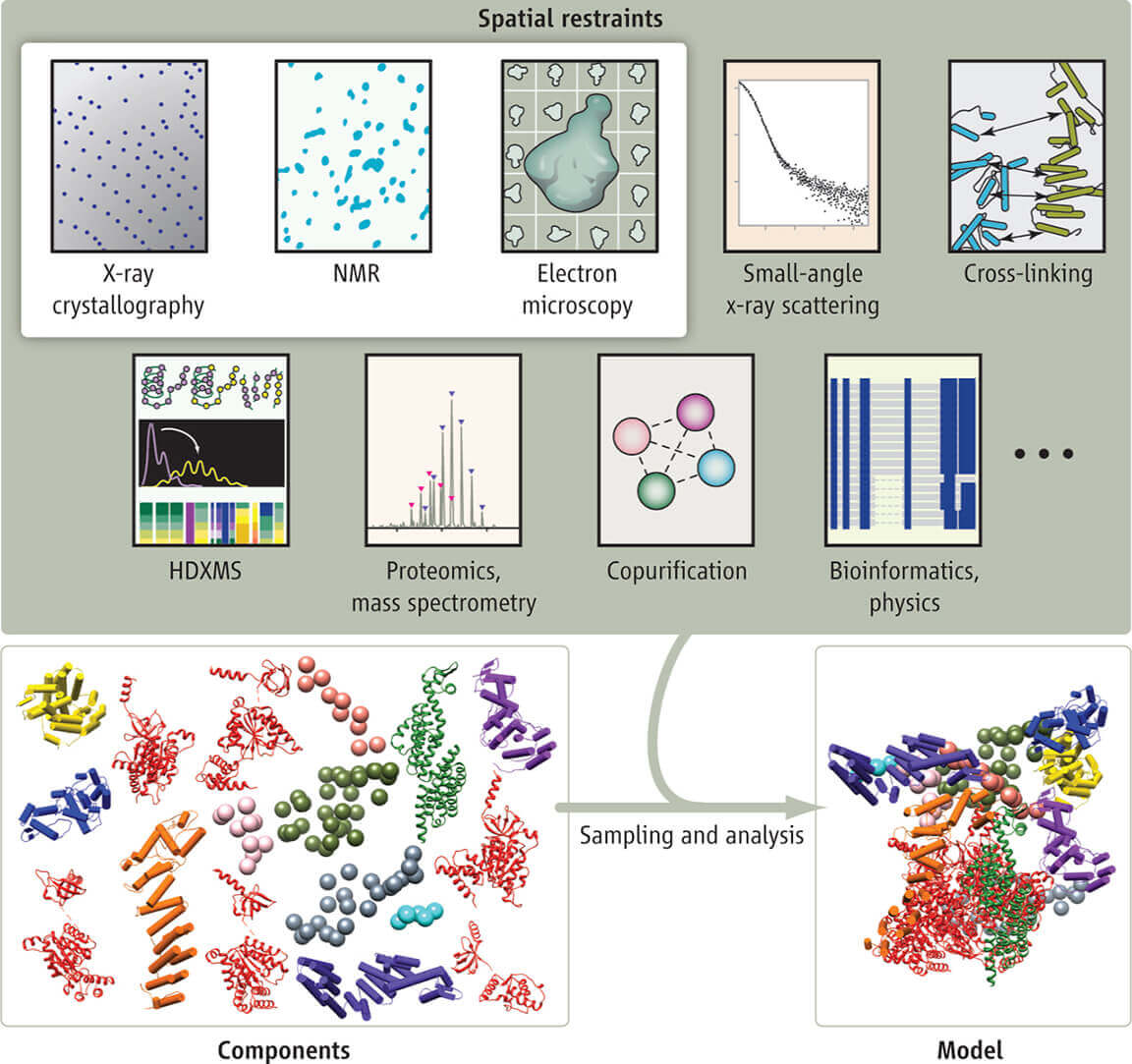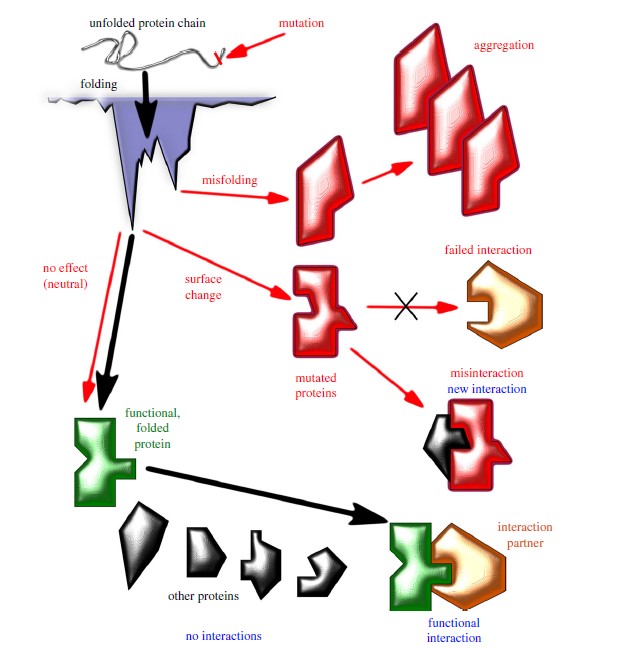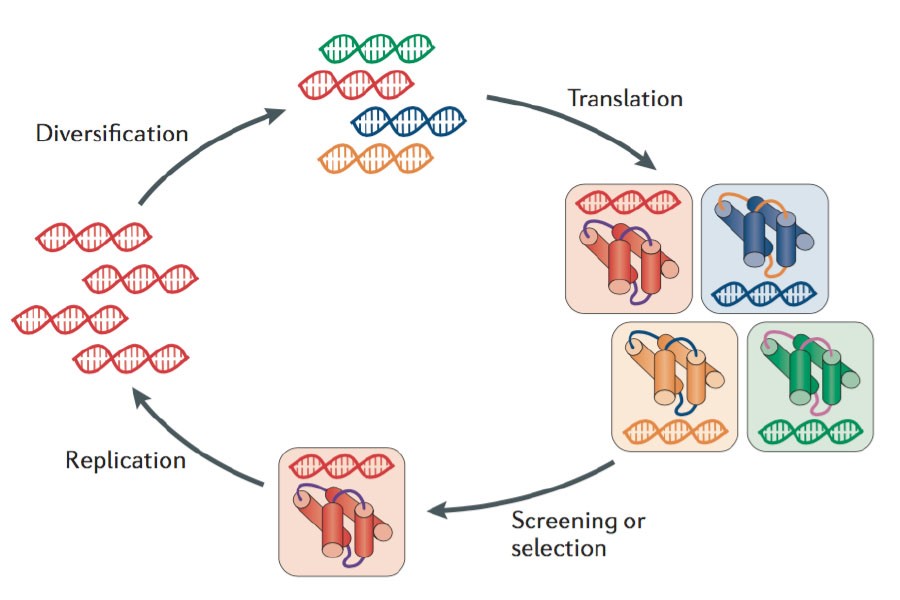Drug discovery is a complex and costly process involving multiple stages, from target identification to clinical trials. Traditionally, researchers have relied on experimental techniques such as X-ray crystallography, nuclear magnetic resonance (NMR) spectroscopy, and cryo-electron microscopy (Cryo-EM) to determine the 3D structures of proteins. However, these methods are often time-consuming and expensive, especially for proteins that are difficult to crystallize or have complex structural dynamics. The advent of AlphaFold, a deep learning-based protein structure prediction tool, has revolutionized structural biology by offering accurate and rapid predictions of protein structures. The integration of AlphaFold into the drug discovery workflow has the potential to accelerate target identification, structure-based drug design (SBDD), and lead optimization.
Breakthroughs in Protein and Complex Structure Prediction
The Evolution of AlphaFold 3
The launch of AlphaFold 2 in 2020 revolutionized protein structure prediction by achieving near-experimental accuracy in predicting protein 3D structures. The development of AlphaFold 3 has further advanced the field by accurately predicting molecular interactions among proteins, nucleic acids, small molecules, and other biomolecules. AlphaFold 3 introduces a diffusion-based architecture that extends beyond protein monomers to predict joint structures of complexes, including proteins, ligands, nucleic acids, and other chemical entities. This results in significantly higher accuracy for protein-ligand interactions, protein-nucleic acid interactions, and antibody-antigen complexes, outperforming even specialized tools in these areas.
Key Capabilities of AlphaFold
- Accurate and Rapid Protein Structure Prediction: AlphaFold delivers near-experimental accuracy in predicting 3D protein structures in a matter of hours, making it a game-changer for SBDD. Its predictions eliminate the need for time-consuming experimental methods significantly accelerating the early drug discovery stages.
- Broader Target Coverage: AlphaFold excels across a variety of protein types, including membrane proteins and disordered regions, which are often difficult to study experimentally. This capability opens up new possibilities for targeting previously inaccessible proteins, making AlphaFold a powerful tool for identifying druggable targets.
- Modeling Complex Biomolecular Interactions: With AlphaFold 3, the platform can now predict protein-ligand interactions, protein-nucleic acid complexes, and multimeric protein assemblies with high accuracy. This capability is crucial for drug-target interaction studies, enabling better understanding of binding modes and allosteric site targeting in drug design.
Integrating AlphaFold into Drug Discovery Stages
1. Target Identification and Validation
Target identification is the foundational step in the drug discovery process, where researchers identify proteins involved in disease pathways that can serve as viable drug targets. AlphaFold, particularly with its advancements in AlphaFold 3, revolutionizes this stage by enabling rapid and accurate predictions of protein structures, including previously uncharacterized or difficult-to-study proteins.
| Key Contributions of AlphaFold to Target Identification | |
|---|---|
| Aspect | Description |
| Annotation of Protein Functions | AlphaFold's predictions provide detailed insights into the functional domains of proteins, even for those that have not been experimentally resolved. These structural insights allow researchers to hypothesize the biological roles of proteins, accelerating the identification of new druggable targets and expanding the range of possible therapeutic interventions. |
| Validation of Known Targets | By generating high-accuracy protein models, AlphaFold allows researchers to validate existing drug targets by comparing predicted structures with experimental data. This enables the identification of subtle structural variations that may influence drug binding and target efficacy, improving the overall accuracy of the drug discovery process. |
| Exploring Complex Biomolecular Interactions | AlphaFold 3 significantly enhances the ability to model protein-protein interactions and nucleic acid complexes, offering deeper insights into complex biological pathways. This capability reveals binding sites and interaction interfaces that were previously inaccessible, enabling more precise targeting of proteins involved in critical disease processes. |
| Accelerating Target Discovery in Challenging Systems | AlphaFold excels at predicting the structures of membrane proteins and protein complexes, which are notoriously difficult to study experimentally. By providing accurate structural data, it helps researchers focus on the most promising targets, significantly reducing the need for costly and time-consuming experimental validation. |
By integrating AlphaFold's structural predictions with experimental data, researchers can more efficiently identify, validate, and explore novel drug targets, ultimately enhancing the precision and speed of the drug discovery pipeline.
2. Structure-Based Drug Design (SBDD)
One of the most significant contributions of AlphaFold is its application in structure-based drug design. SBDD relies heavily on high-resolution protein structures to design molecules that can bind specifically to a target protein. AlphaFold facilitates this process in several ways:
| Key Contributions of AlphaFold to SBDD | |
|---|---|
| Aspect | Description |
| Accurate Prediction of Binding Pockets | AlphaFold's high-precision 3D protein structures enable researchers to accurately identify potential binding pockets for small molecules or biological drugs. These predicted sites are critical for designing inhibitors, activators, or modulators that regulate protein function, offering greater control over therapeutic interventions. |
| Facilitating Virtual Screening | AlphaFold significantly enhances virtual screening by providing reliable structural models for high-throughput testing of large compound libraries. Researchers can rapidly identify molecules that fit the predicted binding pockets, streamlining the discovery of lead compounds and reducing both time and costs associated with traditional screening methods. |
| Improved Protein-Ligand Binding Predictions | AlphaFold 3 has surpassed conventional docking methods in predicting protein-ligand interactions. It offers better resolution of active sites and binding modes, making it more effective in discovering compounds with strong binding affinity and specificity, thus accelerating lead optimization. |
| Structural Insights for Antibody-Antigen Interactions | AlphaFold 3 has enhanced the understanding of antibody-antigen interactions, which are critical for biologics and vaccine development. By accurately modeling these complex interfaces, AlphaFold aids in designing therapeutic antibodies and improving vaccine efficacy. |
By providing detailed and accurate protein structures, AlphaFold 3 has revolutionized SBDD, making the design and optimization of drugs more efficient, particularly for previously challenging targets. This integration of AI-driven structure prediction into drug design pipelines represents a transformative leap forward in modern drug discovery.
3. Lead Optimization and SAR Studies
Lead optimization is a critical step in drug discovery, where researchers refine potential compounds to improve their binding affinity, selectivity, and pharmacokinetic properties. AlphaFold, especially AlphaFold 3, plays a pivotal role in this process by providing detailed structural insights into the protein-ligand interactions that underpin structure-activity relationship (SAR) studies.
| Key Contributions of AlphaFold to Lead Optimization and SAR Studies | |
|---|---|
| Aspect | Description |
| Side-Chain Modeling for Improved Binding Affinity | AlphaFold offers highly accurate predictions of side-chain orientations, which are essential for understanding how small molecules interact with specific amino acids in the target protein. This enables researchers to fine-tune functional groups on lead compounds, optimizing them to enhance binding affinity and improve the overall drug efficacy. |
| Modeling Conformational Flexibility | While AlphaFold predictions are typically static, they provide a robust foundation for molecular dynamics (MD) simulations. These simulations allow researchers to explore how proteins undergo dynamic conformational changes during ligand binding. Understanding these transitions is crucial for refining drug candidates to improve their efficacy and minimize off-target effects. |
| Post-Translational Modifications (PTMs) | AlphaFold 3's ability to model post-translational modifications provides additional insights into how these modifications affect drug binding and protein function. PTMs such as phosphorylation or glycosylation can alter a protein's structure, influencing the binding landscape and offering new avenues for lead optimization. |
| Comprehensive Structural Refinement | AlphaFold 3's ability to predict protein-ligand interactions with high accuracy extends to complex biomolecular assemblies, offering a more complete understanding of how lead compounds interact with their target proteins. This comprehensive view helps researchers refine lead compounds more efficiently, ensuring they meet the necessary criteria for further development in the drug pipeline. |
By offering precise structural data and facilitating the exploration of protein dynamics, AlphaFold significantly enhances the lead optimization process, making it more efficient and effective in advancing promising compounds toward clinical development.
4. De Novo Drug Design
De novo drug design refers to the creation of entirely novel drug molecules from scratch, based on the predicted structure of a target protein. AlphaFold 3 has significantly advanced this approach by offering precise and detailed 3D structural models that enable the design of selective and potent compounds.
| Key Contributions of AlphaFold to De Novo Drug Design | |
|---|---|
| Aspect | Description |
| Accurate Protein-Ligand Interaction Predictions | AlphaFold 3's unprecedented accuracy in predicting protein-ligand interactions allows researchers to design molecules that can precisely fit within a protein's active site or binding pocket. This structural insight is crucial for crafting drugs that interact optimally with target proteins, leading to enhanced binding affinity and efficacy. |
| Targeting Allosteric Sites | AlphaFold's ability to predict entire protein structures, including remote regions, has opened the door to targeting allosteric sites—regions distant from the active site that can modulate protein function. Designing drugs to bind to these sites offers new therapeutic strategies, particularly for proteins that are difficult to inhibit directly at the active site. |
| Designing Highly Specific and Potent Drugs | With AlphaFold 3, researchers can generate novel compounds that are highly selective for their target proteins, minimizing off-target effects. The ability to accurately model binding site interactions and predict ligand docking ensures that these de novo drugs are tailored to fit specific structural features of the protein, resulting in more potent drug candidates. |
| Modeling Complex and Challenging Targets | AlphaFold 3 excels at predicting structures for challenging proteins, such as membrane-bound receptors, multimeric complexes, and protein-ligand systems that are often difficult to model with traditional methods. This makes de novo drug design more feasible for previously intractable targets, enabling the development of novel therapeutic options in undruggable or highly complex biological systems. |
| Rapid Iteration of Drug Design | The high-speed predictions provided by AlphaFold allow for faster design cycles, where researchers can quickly evaluate and optimize newly designed molecules. This rapid iteration process accelerates the discovery of promising drug candidates, reducing the time required to bring innovative treatments from concept to testing. |
By providing accurate and detailed structural predictions, AlphaFold 3 has become an invaluable tool for de novo drug design, enabling the creation of novel, highly specific therapeutic compounds that were previously difficult or impossible to design using traditional methods.
5. Predicting Resistance Mutations
Drug resistance is a significant challenge in the treatment of infectious diseases and oncology, where mutations in target proteins can reduce the efficacy of existing therapies. AlphaFold 3 provides crucial insights into how these mutations affect protein structure and drug binding, enabling the design of next-generation therapies to overcome resistance.
| Key Contributions of AlphaFold to Predicting Resistance Mutations | |
|---|---|
| Aspect | Description |
| Understanding Mutation-Induced Structural Changes | AlphaFold can accurately predict how point mutations alter a protein's 3D structure and its interaction with therapeutic compounds. This capability helps researchers anticipate how a mutation might weaken or disrupt drug binding, which is critical for designing therapies that remain effective despite protein changes. |
| Modeling Protein-Ligand Interactions in Mutated Targets | By predicting how mutations affect protein-ligand interactions, AlphaFold 3 enables researchers to design next-generation drugs that maintain or improve binding affinity, even in the presence of resistance mutations. This is particularly important for evolving targets like viral proteins and cancer markers. |
| Targeting Rapidly Evolving Diseases | In diseases such as HIV, hepatitis, or cancer, where rapid mutation rates can drive resistance, AlphaFold helps researchers stay ahead by identifying mutational hotspots and predicting how these changes affect drug efficacy. This information is vital for developing broader-spectrum drugs that can target multiple mutant strains. |
| Designing Resistant-Busting Therapeutics | With AlphaFold's structural insights, researchers can design therapeutics that are less susceptible to resistance, either by improving drug binding to conserved regions of the target protein or by crafting molecules that target allosteric sites less likely to mutate. |
| Real-Time Adaptation to Resistance Mechanisms | The speed and accuracy of AlphaFold 3 make it possible to quickly model emerging mutations in real time, allowing researchers to adapt existing therapies or design new ones in response to evolving resistance patterns. This is particularly useful in pandemics or rapidly changing cancer profiles, where timely adjustments to treatment strategies are crucial. |
By leveraging AlphaFold's ability to predict structural changes caused by mutations, researchers can stay ahead of resistance, designing robust drugs that remain effective against evolving disease targets, offering new hope for treating drug-resistant infections and cancers.
Limitations and Challenges of AlphaFold in Drug Discovery
While AlphaFold 3 represents a major advance in the field, some limitations persist:
- Protein Dynamics: AlphaFold 3 predictions, though improved, are still static and may not fully capture the range of conformational states a protein might adopt in its natural environment. However, the diffusion model offers a better approximation of protein flexibility.
- Binding Site Specificity: Accurately predicting ligand-induced conformational changes in highly flexible binding sites remains a challenge.
- Stereochemistry and Complex Interactions: AlphaFold 3 sometimes encounters difficulties with chirality violations and atomic clashes in crowded molecular environments. Researchers must still validate AlphaFold 3 predictions with experimental techniques like cryo-EM and X-ray crystallography to ensure structural fidelity.
Complementing AlphaFold with Experimental Techniques
To overcome these challenges, AlphaFold must be integrated with experimental validation and other computational tools:
| Techniques | Description |
|---|---|
| Cryo-EM and NMR Spectroscopy | These techniques can be used to validate and refine AlphaFold-predicted models, particularly for proteins with complex dynamic behaviors. |
| Molecular Dynamics (MD) Simulations | MD simulations complement AlphaFold by modeling protein flexibility and the dynamic nature of protein-ligand interactions. |
| Biophysical Assays | Experimental assays such as surface plasmon resonance (SPR) and isothermal titration calorimetry (ITC) are essential for validating the binding affinity and kinetics of drug candidates designed using AlphaFold structures. |
At Creative Biostructure, we are dedicated to overcoming the limitations of AlphaFold 3 by offering comprehensive structural analysis services. By integrating experimental data with AlphaFold predictions, we deliver more precise structural models, ensuring a deeper understanding of protein structures.
We specialize in dynamic conformation analysis, using advanced experimental techniques to capture proteins' multiple conformations in various environments, including those resulting from ligand interactions. This allows us to reveal key conformational changes that are essential for drug discovery.
Additionally, our team provides expert guidance in protein engineering and drug development, utilizing AlphaFold 3's predictions as a foundation. Through experimental validation and optimization, we accelerate the drug design process, offering a seamless, end-to-end solution from initial prediction to final validation. For more information about our services and how we can support your research and development needs, feel free to contact us.
References
- Senior A W, Evans R, Jumper J, et al. Improved protein structure prediction using potentials from deep learning. Nature. 2020. 577(7792): 706-710.
- Jumper J, Evans R, Pritzel A, et al. Highly accurate protein structure prediction with AlphaFold. Nature. 2021. 596(7873): 583-589.
- Abramson J, Adler J, Dunger J, et al. Accurate structure prediction of biomolecular interactions with AlphaFold 3. Nature. 2024: 1-3.


